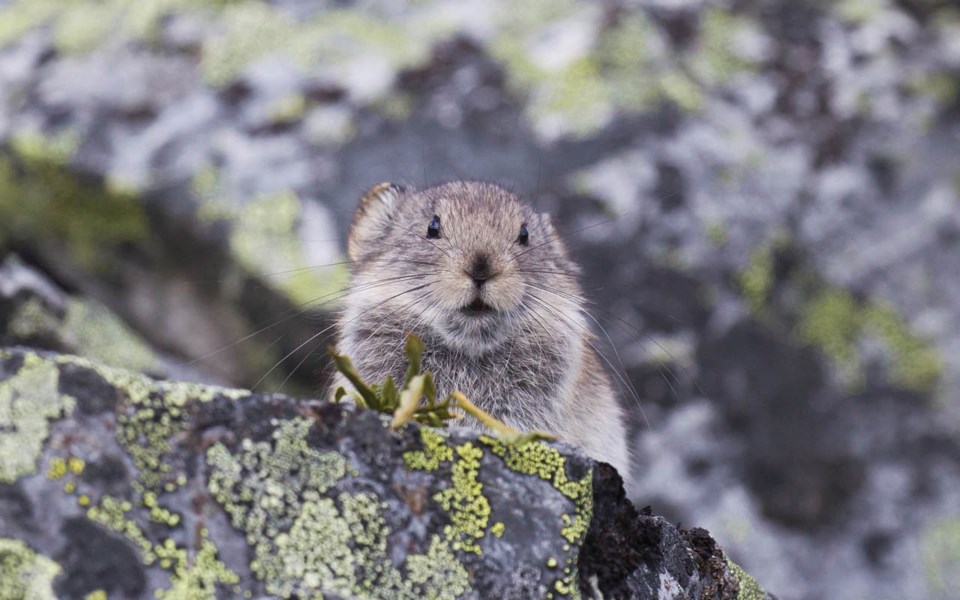While most accept that the world is warming, policymakers have been slow to respond.
Many blame the incremental nature of climate change: It can be difficult to clearly illustrate the harm in easily grasped ways.
Yet according to two Simon Fraser University (SFU) professors, the impacts come into sharp focus when you look in the right places: namely, glaciers.
Like the melting ice caps, the retreat of the world's glaciers (which by some accounts are melting at an accelerating rate) serve as powerful illustrations of climate change.
SFU terrestrial ecology professor David Hik is alarmed at what is occurring in the Yukon.
He recalls travelling into icefields in the area 30 years ago and it was like "going back to the ice age."
"It was kind of time travel, but into a previous time," recalled Hik. "And now ... it's time travel, but it's time travel into the future because we are seeing this massive loss of huge volumes of ice from the largest sub-polar ice fields in the world."
The loss, he explained, has been documented through comparing aerial photographs taken over the years.
"An analysis from (topographical) maps from (roughly) 1957 to 2010, showed about 22 per cent of the glacier area in the Yukon has been lost," said Hik, whose current research is focused on the southwestern area of the Yukon.
The retreat of glaciers is having profound consequences on river systems in the area, he added.
Hik noted that Slims River (known as A'y Chù by the local Indigenous population)—which once connected the Kaskawulsh Glacier and Kluane Lake (Lhù'ààn Mân)—effectively dried up in 2016, and melt water from the glacier now drains south towards the Pacific Ocean. This has caused lake levels to drop by two metres.
"It's (affected) the spawning areas for lake trout and salmon that migrate up into the river, and it's had a huge impact on the communities around the lake, especially the First Nation communities, in terms of how safe it is to travel on ice in winter or get boats to the lake in the summer," explained Hik.
The consequences to the wider ecosystem are also profound. Hik highlighted the plight of the collared pika, which is currently listed as a "species of special concern" under the Species at Risk Act, as an example.
"What happens, when the snow disappears, is that (the) space under the snow that provides some insulation for colder temperatures is not there anymore, and so we see (this contributing to) mortality of populations," he said. "It's species that are typically well-suited to the cold that may, in fact, do very poorly as things warm up."
Global warming is also impacting alpine plants, the pika's source of food.
Yet while some plant life species are suffering, others "seem to be thriving" and are actually growing taller than before, said Hik.
"This is particularly true for woody shrubs, like salix (willow) and birch—the dwarf shrubs you see at the tree line," he said. "We've documented how they are moving up the slope, and this is true around the northern hemisphere and on mountains around the world."
John Clague, a professor of environmental earth sciences focused on glaciers, views his work as complementary to Hik's. Clague is currently working on a research project centred in the foothills of the Patagonian Andes and Tierra del Fuego.
What's happening to glaciers in the Andes could have a profound impact on farming in the Pampas, a 750,000 square-kilometre area known as the "breadbasket" of Argentina, he explained.
"It's very dependent on glacier and snowmelt to provide water for food production," said Clague. "Most people think of it as a temperature-related phenomenon, that farms are less productive if you have a warmer climate, but water is just as critical as temperature."
Clague said there are similarities between what's occurring in Argentina and what is likely to occur in Canada's prairies, an area that is similarly fed by glacial runoff.
"They're both breadbasket areas for feeding their own populations and feeding a lot of people around the world," he said.
Clague noted that food production is just one thing that would be affected by global warming—and society will increasingly need to adapt to the challenges of climate change.
"For me, it's a closed case," he said. "We're having an impact on climate change. We just need to think about what the world is going to be like with less ice."




